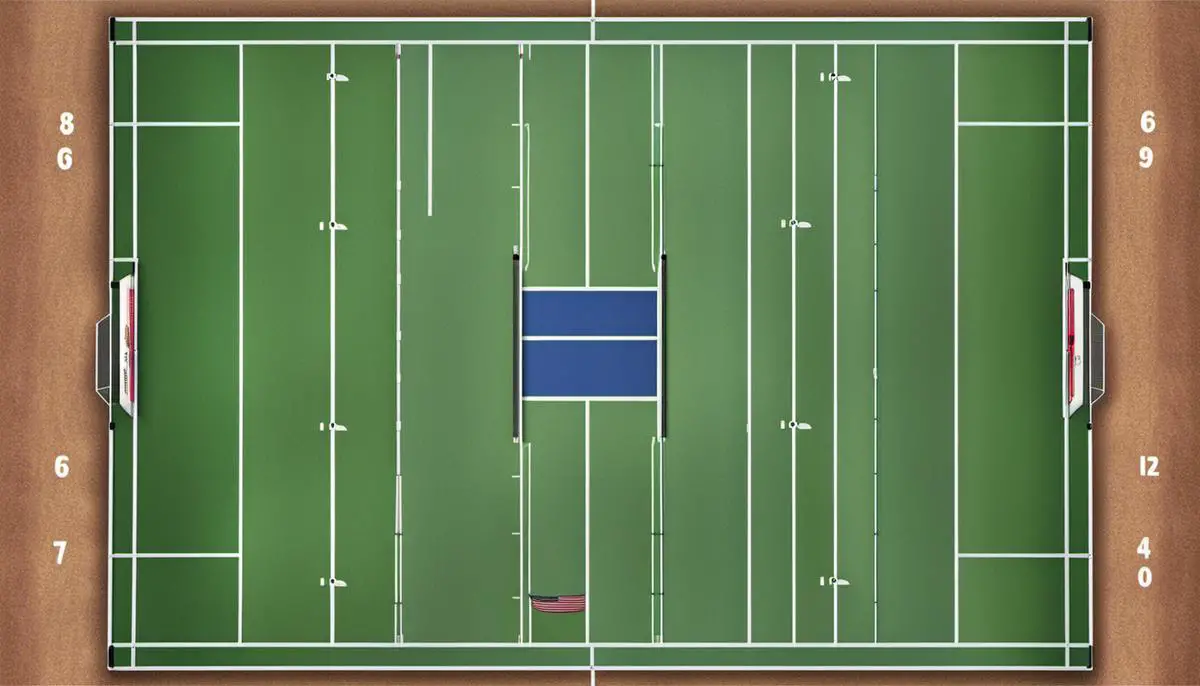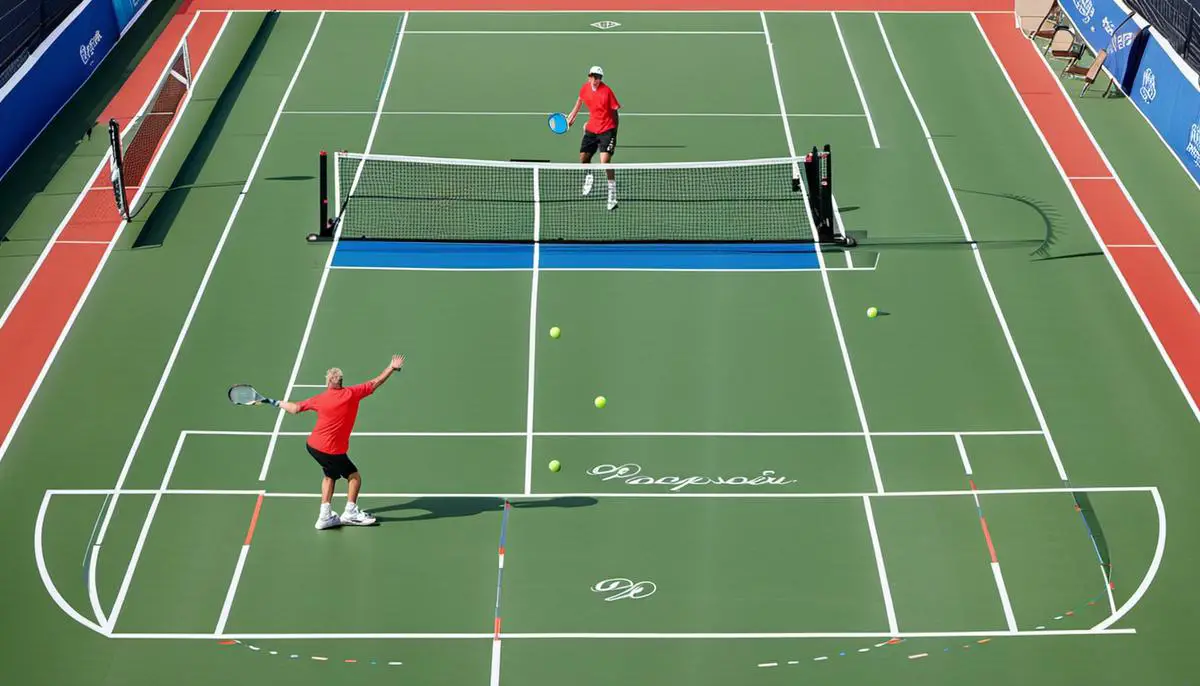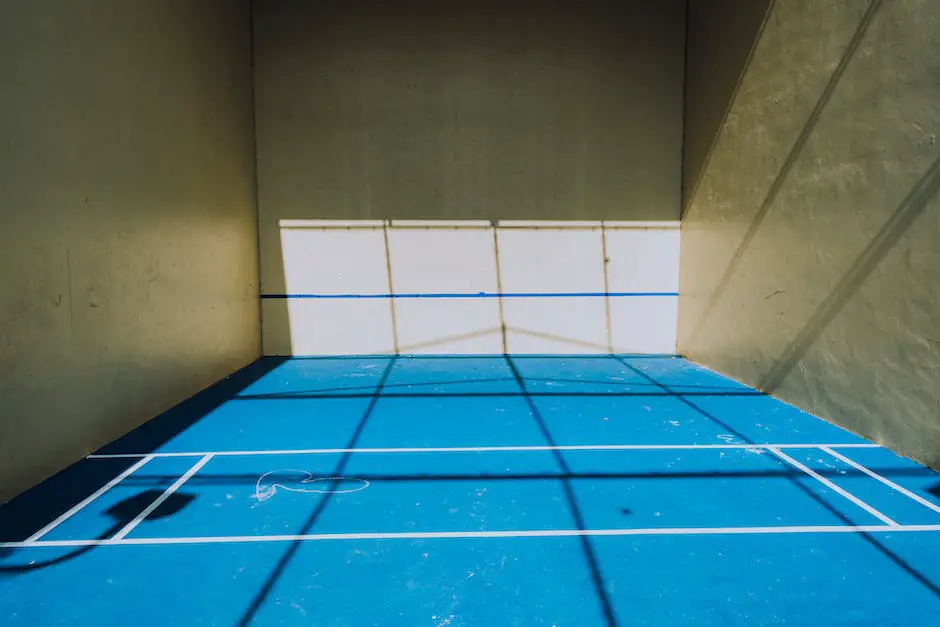Pickleball, a sport that meshes elements of tennis, badminton, and ping-pong, has surged in popularity, ensnaring the interests of both sports enthusiasts and newcomers worldwide. Whether you’re an active participant or an avid spectator, delving into understanding the intricate rules and scoring system is fundamental to appreciate the game play fully. In this regard, we will explore the basics of pickleball, focusing primarily on the court layout, two-bounce rule, the non-volley zone, and the roles of the players. Further, the scoring structure of pickleball, often considered as one of the most perplexing aspects, will be unknotted, with us explaining both singles and doubles scoring, the significance of serving, and the criteria determining the end of a game. Lastly, we also give detailed insights into the advanced scoring strategies adopted by pro players that can be potentially game-changing when applied correctly.
Understanding the Basics of Pickle ball
Understanding Pickle ball Court Layout
The court layout in pickle ball is similar to that of a badminton court. The total size is 20 feet wide by 44 feet long for both singles and doubles play. The court is divided into two equal sides by a net which is hung at a height of 34 inches at the center and 36 inches at the sides. Each side of the court contains two main areas: the service court and the non-volley zone, also known as the kitchen.
The Two-Bounce Rule in Pickle ball
The two-bounce rule is a fundamental part of pickle ball. This rule states that the ball must bounce once on the server’s side and once on the receiver’s side before volleys (hitting the ball before it bounces) are allowed. The server must serve the ball from behind the baseline, and the receiver must let the serve bounce. After the serve and return have bounced, players can either volley the ball in the air, or let it bounce.
The Importance of Non-Volley Zone
The non-volley zone, or kitchen, is a seven-foot zone on both sides of the net. Players are not allowed to volley the ball – hit it before it bounces – while standing in this zone. This prevents players from smashing the ball at a downward angle from an advantageous position right at the net. Players can enter the non-volley zone to play a ball that has bounced and the following shot can be volleyed from the kitchen, as long as the player steps back first.
Roles of the Server and the Receiver
The server initiates play by serving the ball diagonally to the opposing side. The serve must be underhand and the ball must clear the non-volley zone, landing in the service court on the opposite side. After a successful serve, the server and partner (in doubles) have to wait until the ball bounces again on their side of the court to return it.
The receiver on the other hand, must let the ball bounce once before returning it, and likewise, after hitting the ball, the receiver and partner (in doubles) have to wait for the ball to bounce once on their side before returning it.
Pickle ball Scoring Basics
Scoring in pickle ball is done in a unique way; only the serving team can earn points. The game is generally played to 11, but can be played to 15 or 21, with the requirement that the winning team must be ahead by at least 2 points. In doubles, each player serves consecutively from the right-service court when their team scores odd points and from the left-service court when their team scores even points. The first serve of a new game is done from the right-service court. If a team fails to score, the serve switches to the opposite team, and they continue play until one team achieves the requisite points to win.

Pickle ball Scoring System
Understanding Pickleball Scoring Basics
In pickleball, a point is scored only by the team serving. This is called a rally scoring system and is essential to the pace of the game. The game is played to 11 points, but a team must win by at least 2 points. For example, if the score is 10-10, the game continues until a team leads by 2 points.
Singles Scoring in Pickleball
In a singles pickleball match, the player starts the game by serving from the right-hand court underhand to the opponent’s service court diagonally opposite. If the serving player scores, they continue to serve, but switch service courts. The serving player continues to serve and switch service courts as long as they keep scoring. Once a serving player fails to win the rally, the serve is handed over to the opponent.
Doubles Scoring in Pickleball
In a doubles pickleball match, the rules are slightly different. The serving team scores points and continues to serve as long as they are winning the rallies. At the beginning of a new game, only one partner on the serving team has a chance to serve before a side out (losing the rally), and then it’s the other team’s turn to serve. For all subsequent hands, both members of each team will have a chance to serve and score points until they commit a fault.
Understanding The Importance of Serving in Pickleball Scoring
Serving in pickleball is an important part of the scoring system. The serving team has the advantage since they can score points. The aim of the serving team is to keep serving as long as possible by winning the rallies. The server has to serve underhand with the paddle below the waist, and the serve must land in the diagonal service court.
Determining the End of a Pickleball Game
A standard game of pickleball is played to 11 points, but a team must win by 2 points. This means that games can exceed 11 points. In tournament play, games may be to 15 or 21 points, with the team again needing to win by 2 points. Once a team has a lead of 2 points, the game is complete and that team is the winner.

Advanced Scoring Strategies
Understanding Pickleball Scoring Basics
Before delving into advanced scoring strategies, one must understand the basic scoring mechanism in pickleball. In this fast-paced game, the serving team can only score points. The first team to reach 11 points, while leading by at least two points, wins the match.
Analyzing Pro Strategies: Offensive Play
Most professional pickleball players use a mixture of offensive and defensive strategies to win points. For an offensive play, the aim is to retain control of the net. When your team has possession at the net and is serving, it provides a significant advantage as it is easier to hit winning shots.
A common offensive strategy adopted by pros includes slamming or spiking the ball. If you’re able to hit a successful slam or spike, it could be very challenging for the opponent to return, giving you the point. Pros also utilize deceit and unpredictability, constantly altering the pace, direction, or spin of their shots to keep opponents guessing.
Implementing Offensive Strategies
To implement these offensive strategies, focus on perfecting fast, low serves that reduce the opponent’s ability to attack off the serve. This can place your team in a more advantageous position on the court. Also, practice different shot types like dinks, drives, and drops to increase your unpredictability.
Analyzing Pro Strategies: Defensive Play
On defense, professional players attempt to regain control of the net or neutralize the offensive advantage of the serving team. They often utilize strategies such as blocking and lobbing.
Blocking involves standing near the net and returning a slam or spike from the opponent. If successful, the ball will just barely clear the net and land in the opponent’s no-volley zone, also known as the “kitchen,” making it difficult for them to return.
Lobbing, another defensive strategy, involves hitting the ball high and deep into the opponent’s court. It’s an effective way to push the offensive players back, giving you a chance to take control at the net.
Implementing Defensive Strategies
To effectively implement these defensive strategies, focus on improving your reaction time and anticipation. This will prepare you for blocking opponent’s slams or spikes effectively. Also, ensure a good understanding of the court layout. This will allow optimal positioning for a successful lob.
Focus on Player Weaknesses
An important strategy that professionals use is exploiting the weaknesses of their opponents. This might involve targeting a player with less experience or less physical strength. This type of strategy can be incredibly effective, but it requires a high level of awareness and skill.
Strategize For Double Scoring
As a part of doubles play, it’s crucial to create a dynamic with your partner where you cover each other’s weaknesses and complement each other’s strengths. Pro players often use the ‘stacking’ strategy where both partners stand on the same side of the court while serving or receiving. This allows the stronger player to take more shots, thereby giving them control of the game.
Remember, practice and patience are key in mastering these pro-level strategies in pickleball.

Thus, this comprehensive guide allows you to navigate smoothly, the often daunting and misunderstood rules and scoring system of pickleball. The game’s complexity lies not only in the player’s physical agility and power but significantly in their understanding of the game logistics and strategizing their movements. By learning the scoring structure, comprehending the role of the server and the receiver, and applying advanced scoring strategies, you’re well on the path to acing your game, and challenging the pros. A thorough appreciation of this unique sport is not just about knowing how to play, but also how to score, how to strategize, and ultimately, how to win. Immerse yourself in this game of power, precision, and strategy – and let the wonderful world of pickleball take you by storm!